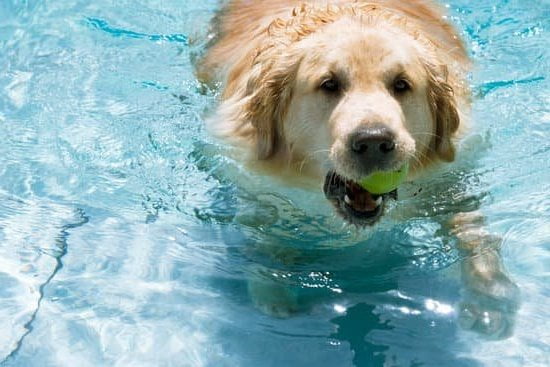Is your dog displaying signs of territorial aggression? Does your furry friend become aggressive when someone approaches their food, toys, or space? If so, you may be wondering how to train territorial aggressive dog. Understanding the root causes of territorial aggression and implementing effective training methods are crucial for addressing this behavior in your beloved pet.
Territorial aggression in dogs can be a challenging behavior to manage, but with the right approach and consistent training, it is possible to modify this behavior. Signs and symptoms of territorial aggression can manifest in various ways, from growling and barking to biting and lunging at perceived threats. Recognizing these behaviors is the first step in addressing and correcting them.
Positive reinforcement training is an essential aspect of modifying territorial aggression in dogs. This training method focuses on rewarding desired behaviors while discouraging unwanted actions. By using treats, praise, and other rewards, you can effectively communicate with your dog and encourage positive responses to potentially triggering situations.
Creating a safe and controlled environment for training is also crucial when addressing territorial aggression. By managing your dog’s exposure to trigger stimuli and gradually desensitizing them through controlled interactions, you can help your pet learn how to react calmly in various situations. Additionally, establishing clear leadership and boundaries with your dog will help reinforce that they do not need to protect their territory, as you are capable of doing so as their trusted leader.
Signs and Symptoms of Territorial Aggression in Dogs
Growling, Barking, and Lunging
One of the most common signs of territorial aggression in dogs is growling, barking, and lunging at intruders or strangers. This behavior is often triggered when an unfamiliar person or animal enters the dog’s perceived territory, whether it’s their home, yard, or even the owner’s personal space. It’s important to recognize these warning signs as a precursor to more serious aggressive behavior.
Protective Stance and Body Language
Dogs may also exhibit a protective stance and defensive body language when displaying territorial aggression. This could include stiff posture, raised hackles, ears pinned back, and a fixed gaze on the perceived threat. Understanding your dog’s body language can help you anticipate and prevent potential aggressive outbursts.
Property Marking
Territorial aggression can also manifest through property marking behaviors such as urine spraying or excessive scent marking around boundaries. Dogs may use this method to “claim” their territory and warn off potential intruders. Pay attention to any unusual marking behavior that may indicate territorial issues.
Recognizing these signs and symptoms of territorial aggression in your dog is crucial for addressing the issue effectively. By understanding what triggers your dog’s territorial behavior and being aware of warning signs, you can take proactive steps to train and manage their aggression in a positive manner.
The Importance of Positive Reinforcement Training
Positive reinforcement training is an essential aspect of addressing territorial aggression in dogs. This method focuses on rewarding desirable behavior, which helps to encourage the dog to repeat the same behavior in the future. By using positive reinforcement, you can effectively redirect your dog’s focus and behavior in a more positive direction.
The Benefits of Positive Reinforcement
When dealing with territorial aggression, it is crucial to use positive reinforcement as it not only helps in shaping the desired behavior but also strengthens the bond between you and your dog. By rewarding your dog for exhibiting calm and non-aggressive behavior, you are helping them understand what is expected of them. This method also promotes a sense of trust and understanding between you and your pet.
Using Treats and Rewards
One effective way to implement positive reinforcement training is by using treats and rewards. When your dog displays non-aggressive behavior in a situation that typically triggers their territorial aggression, immediately reward them with treats or praise. This will help them associate positive outcomes with staying calm and non-aggressive.
Consistency Is Key
Consistency is crucial when using positive reinforcement training to address territorial aggression in dogs. It’s important to set clear boundaries and expectations for your pet and consistently reward them for following these guidelines. Inconsistency can lead to confusion for your dog, making it difficult for them to understand what behaviors are acceptable.
By incorporating positive reinforcement into your training routine, you can effectively guide your dog away from territorial aggression and towards more desirable behavior. Additionally, this method promotes a healthy relationship based on trust and respect between you and your pet, ultimately leading to a more harmonious living environment.
Creating a Safe and Controlled Environment for Training
Training a territorial aggressive dog can be challenging, but creating a safe and controlled environment is essential in ensuring successful training. Here are some important tips to consider when setting up the training environment for your dog:
- Remove Triggers: Identify what triggers your dog’s territorial aggression and eliminate or minimize exposure to these triggers during training sessions. This could include keeping other animals or unfamiliar people out of the training area.
- Use Barriers: When working on desensitization and counterconditioning techniques, using physical barriers like baby gates or fences can help keep your dog at a safe distance from triggers while still allowing them to see and hear what is going on.
- Controlled Exposures: Gradually expose your dog to the trigger in a controlled manner. For example, if your dog exhibits territorial aggression towards strangers, start by having a familiar friend approach your home from a distance while working on obedience commands.
Creating a safe and controlled environment also involves managing the physical space where training takes place. This may involve setting up specific areas for training, such as a designated room or outdoor space, where distractions can be minimized. Additionally, using tools such as leashes, muzzles, or head halters can provide added control during training exercises.
Consistency is key when creating a safe environment for training a territorial aggressive dog. By taking steps to manage the surroundings and limit potential triggers, you can set the stage for effective behavior modification and positive reinforcement techniques.
Establishing Leadership and Boundaries With Your Dog
When dealing with a territorial aggressive dog, it is crucial to establish yourself as the leader of the pack. This means setting clear boundaries and rules for your dog to follow. Here are some tips on how to go about this:
- Consistency is key: Dogs thrive on consistency and routine. Be sure to set consistent rules and boundaries for your dog, and stick to them no matter what.
- Use positive reinforcement: When your dog follows the rules or displays non-aggressive behavior, be sure to reward them with treats, praise, or playtime. This will reinforce good behavior and help them understand what is expected of them.
- Set physical boundaries: Create physical barriers in your home or yard to limit your dog’s access to certain areas. This can help reduce their territorial behavior and create a more controlled environment for training.
- Establish yourself as the alpha: Show your dog that you are the leader by being calm, assertive, and confident. Avoid coddling or giving in to their demands when they display aggressive behavior.
By establishing yourself as the leader and setting clear boundaries for your dog, you can help reduce their territorial aggression and create a safer environment for everyone in the household. Remember to be patient and consistent in your training efforts, as changing ingrained behaviors takes time and effort. With dedication and positive reinforcement, you can help your territorial aggressive dog become a well-behaved member of the family.
Desensitization and Counterconditioning Techniques
It is important to start desensitization and counterconditioning with a professional dog trainer or behaviorist who can assess your dog’s specific needs and create a customized training plan. The key is to start at a level where the dog notices the trigger but does not react aggressively. For example, if your dog barks at strangers passing by your house, you can begin by having a friend walk far away from your home and reward your dog for remaining calm.
In addition to desensitization, counterconditioning involves pairing the trigger with something positive, such as treats or toys. For example, every time your dog sees another animal without reacting aggressively, give them a treat or engage in play.
Over time, this positive association will help change your dog’s response to the trigger from one of fear or aggression to anticipation of something enjoyable. It is essential to be patient and consistent with these techniques, as progress may be slow but ultimately effective in reducing territorial aggression in dogs.
Implementing Obedience Training and Commands
After understanding the signs and symptoms of territorial aggression in dogs, it’s important to implement obedience training and commands as part of their behavior modification. Obedience training helps establish a clear line of communication between you and your dog, which can be crucial in managing their aggressive tendencies. Training sessions should focus on commands such as “sit,” “stay,” “come,” and “leave it,” which can help redirect your dog’s attention and behavior in potentially triggering situations.
Consistency is key when implementing obedience training for territorial aggressive dogs. It’s important to practice these commands regularly in different environments, gradually increasing distractions to test your dog’s response. Positive reinforcement techniques, such as rewarding good behavior with treats or praise, can also be effective in encouraging your dog to obey commands even in challenging situations.
In addition to obedience training, it’s essential to train your dog to walk on a leash without exhibiting aggressive behavior towards other people or animals. Proper leash manners can prevent escalation of territorial aggression during walks or outings. By incorporating obedience training and commands into your dog’s routine, you can work towards improving their behavior and reducing territorial aggression over time.
| Training Technique | Description |
|---|---|
| Positive Reinforcement | Rewarding good behavior with treats or praise |
| Leash Training | Teaching proper leash manners to prevent aggression during walks |
Seeking Professional Help and Support for Severe Cases of Territorial Aggression
When dealing with severe cases of territorial aggression in dogs, seeking professional help and support is crucial. While positive reinforcement training techniques can be effective in many cases, some dogs may require the expertise of a professional dog trainer or animal behaviorist to address their aggressive behavior. Professional help can provide you with the necessary guidance and support to safely and effectively manage your dog’s aggression.
Professional trainers and behaviorists have the knowledge and experience to assess your dog’s specific situation and tailor a training plan that best suits their needs. They can also provide valuable insight into the root causes of your dog’s aggression and offer specialized techniques for managing and modifying their behavior. Additionally, these professionals can educate you on how to handle your dog during aggressive episodes, ensuring the safety of both you and your pet.
In severe cases of territorial aggression, it is important to seek prompt professional assistance to prevent potential harm to other animals or individuals. By collaborating with a reputable professional in the field, you can work towards creating a safe environment for your dog while addressing their aggressive tendencies effectively. Remember that seeking professional help is not a sign of defeat, but rather a proactive step towards ensuring the well-being of your pet and those around them.
| Seeking Professional Help | Support for Severe Cases |
|---|---|
| Professional guidance | Assessment of specific situation |
| Tailored training plan | Safety education |
| Prevention of harm | Collaboration for safe environment |
Consistency and Patience in Training Your Dog
Training a territorial aggressive dog requires consistency and patience from the owner. It is important to understand that changing your dog’s behavior will not happen overnight, and it will require ongoing training and reinforcement. Consistency is crucial in reinforcing the desired behavior and setting clear boundaries for your dog. This means implementing the training techniques regularly and without fail, as any lapses in consistency can confuse your dog and hinder progress.
Patience is also essential when training a territorial aggressive dog. It is normal for progress to be slow, especially in severe cases of aggression. It may take time for your dog to unlearn their territorial behavior and respond positively to the training methods. Getting frustrated or losing patience during the training process can negatively impact your dog’s progress, so it is important to remain calm, composed, and patient throughout the training journey.
During the training process, it is important to keep in mind that every small step towards progress should be acknowledged and celebrated. Recognizing even the smallest improvements in your dog’s behavior can help maintain motivation and reinforce positive changes.
Remember that each dog is different, so the timeline for progress may vary from one dog to another. By consistently implementing training techniques with patience and understanding, you can make a positive impact on your territorial aggressive dog’s behavior over time.
Monitoring Progress and Adjusting Training Methods
In conclusion, training a territorial aggressive dog requires patience, consistency, and a deep understanding of your dog’s behavior. It is important to be aware of the signs and symptoms of territorial aggression, as well as the importance of positive reinforcement training. Creating a safe and controlled environment for training is essential, as well as establishing clear leadership and boundaries with your dog.
Desensitization and counterconditioning techniques can be effective in helping your dog overcome territorial aggression, along with implementing obedience training and commands. However, it is important to seek professional help and support for severe cases of territorial aggression, as these situations may require specialized knowledge and expertise.
Consistency and patience are key in the training process, as progress may take time. It is crucial to monitor your dog’s progress closely and adjust training methods as necessary. Every dog is unique, so it is important to tailor the training approach to suit your individual dog’s needs. With dedication and the right approach, it is possible to train a territorial aggressive dog and create a harmonious living environment for both you and your pet.
Frequently Asked Questions
Can Territorial Aggression in Dogs Be Cured?
Territorial aggression in dogs can be managed and improved through training, socialization, and behavior modification. It is important to work with a professional dog trainer or behaviorist to address the underlying causes of the territorial behavior and to develop a personalized training plan for the specific needs of the dog.
How Do I Stop My Dog From Being So Territorial?
To stop a dog from being so territorial, it is important to establish clear rules and boundaries within the home, provide proper socialization experiences, and use positive reinforcement training techniques to discourage territorial behavior. Consistency, patience, and understanding the triggers for the territorial behavior are key in addressing this issue.
How Do I Stop My Dog From Being Possessive Aggressive?
Addressing possessive aggression in dogs involves working on building trust and confidence through positive reinforcement training, teaching appropriate behaviors around valuable items, managing the environment to prevent possessive situations, and seeking professional help if needed. Understanding the root cause of possessive aggression is crucial in developing an effective treatment plan for the individual dog.

Welcome to the blog! I am a professional dog trainer and have been working with dogs for many years. In this blog, I will be discussing various topics related to dog training, including tips, tricks, and advice. I hope you find this information helpful and informative. Thanks for reading!





